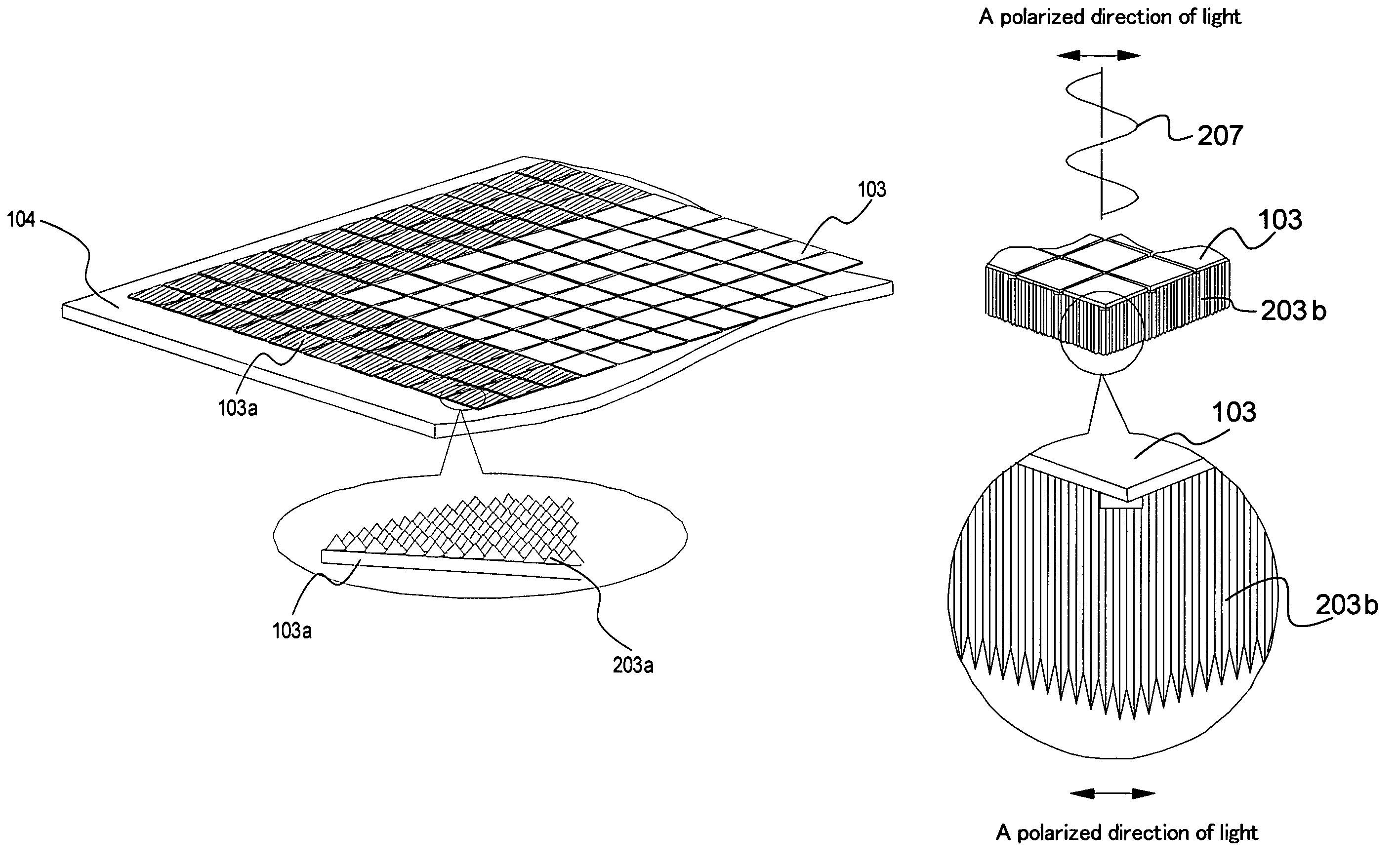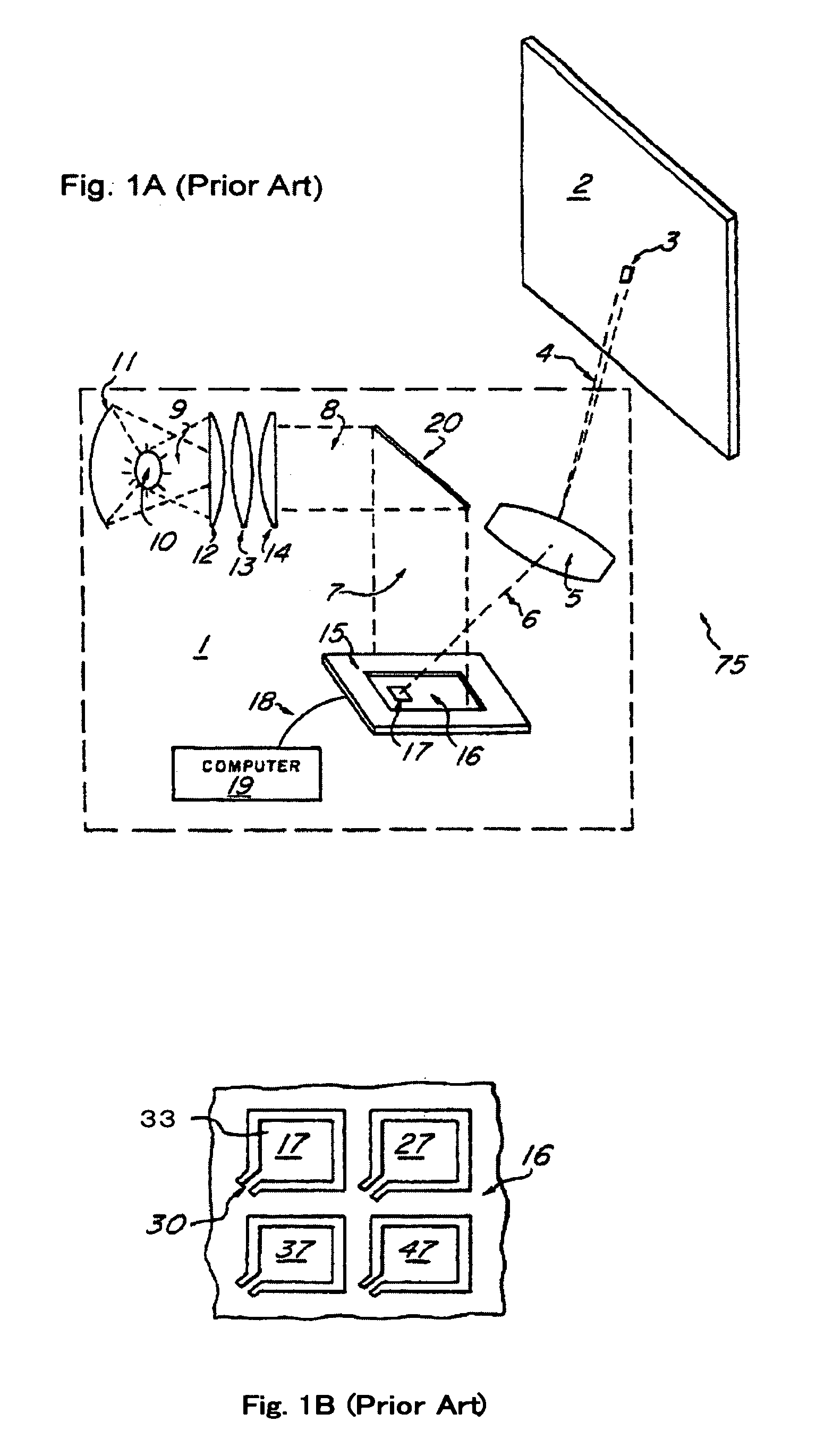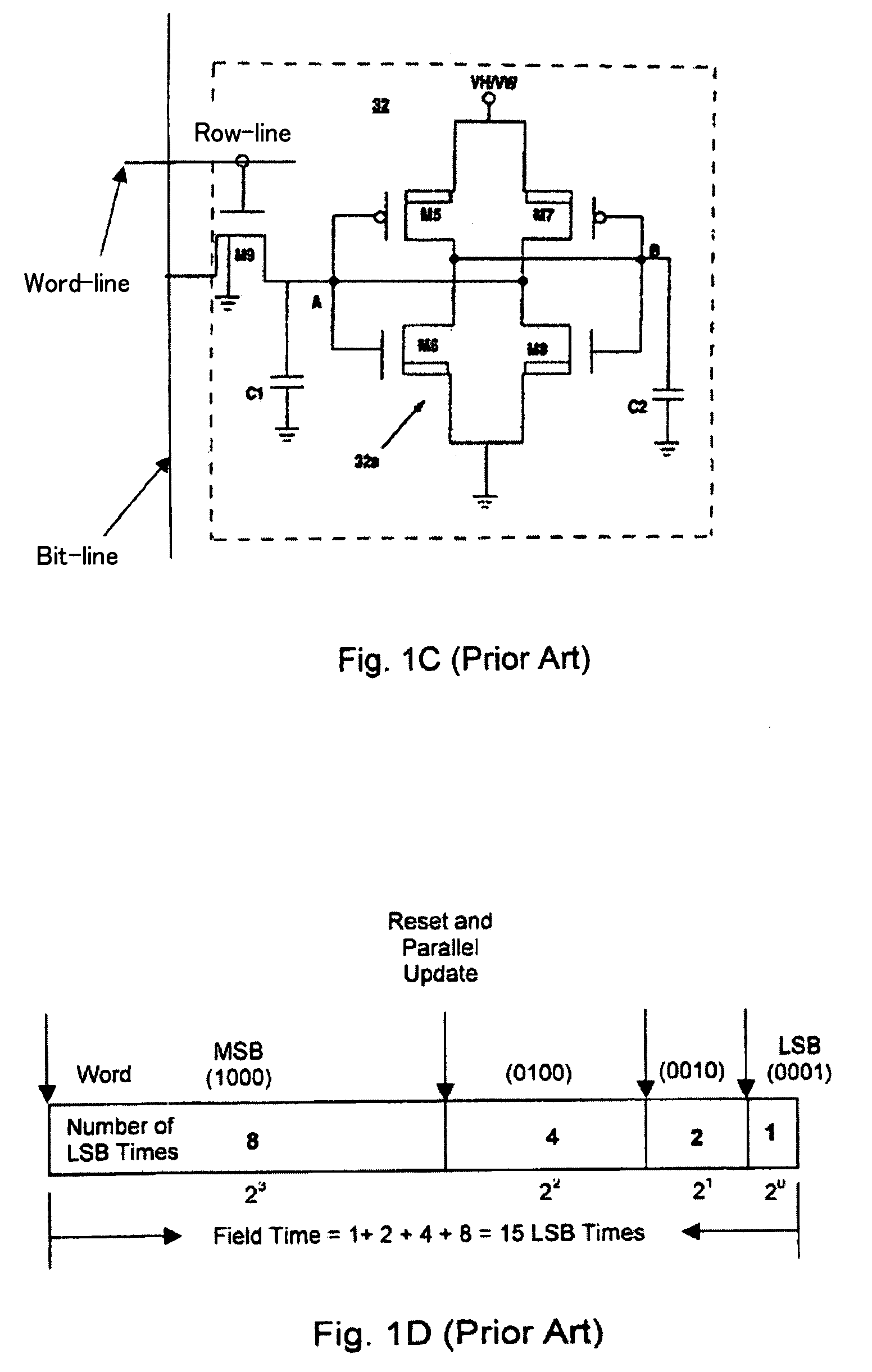Spatial light modulator featured with an anti-reflective structure
a technology of anti-reflective structure and spatial light, applied in the field of image display apparatus, can solve the problems of limited image display quality, adverse effects on image quality, and limited image quality, and achieve the effect of preventing a degradation of image contras
- Summary
- Abstract
- Description
- Claims
- Application Information
AI Technical Summary
Benefits of technology
Problems solved by technology
Method used
Image
Examples
embodiment 1
[0086]A mirror device includes an anti-reflection structure is disclosed as a preferred embodiment 1. FIG. 4 illustrates an exemplary mirror device that includes an anti-reflection structure formed on the device substrate. Specifically, FIG. 4 shows a front cross-section view of an assembly body 200a that function as a package for accommodating a mirror device. FIG. 4 shows only two mirror elements in the mirror device as an example. The assembly body 200a comprises a mirror device, a package substrate 201 and a cover member 202. The package actually includes other parts in additional to the mirror device. The package includes package substrate 201 and cover member 202 shown in FIG. 4 and these parts are part of the package.
[0087]Further details for the constituent component of the assembly body 200a are described below according what are shown in FIG. 4. It is understood that the term “inside of the package” noted in the present specification refers to a space sealing a mirror devi...
embodiment 2
[0092]The following descriptions are for a package featured with an anti-reflection structure as an embodiment 2. The embodiment 2 is a modified example of the embodiment 1. The package according to the embodiment 2 is configured to feature an anti-reflection structure on the internal and external wall surfaces of the package substrate of the embodiment 1. Other configuration of the embodiment 2 is similar to that of the embodiment 1 and therefore the description is omitted here.
[0093]FIG. 5A is a front cross-section diagram of an assembly body 200b-I featured with an anti-reflection structure on the internal wall of the package substrate 201 of the embodiment 1. The assembly body 200b-I shown in FIG. 5A is featured with the anti-reflection structure described above on the inner wall on the package substrate 201b-I. A light reflected on the mirror 103 is prevented from being further reflected on the inner wall of the package substrate 201b-I by the anti-reflection structure featured...
embodiment 3
[0097]The next is a description on a mirror featured with an anti-reflection structure, as an embodiment 3. The embodiment 3 is a modified example of the embodiment 1. The embodiment 3 is configured to feature an anti-reflection structure on the bottom surface of the mirror 103 of the embodiment 1. Other configurations of the embodiment 3 are similar to that of the embodiment 1 and therefore the description is omitted here.
[0098]FIG. 6 is a front cross-section diagram of an assembly body 200c featured with an anti-reflection structure on the bottom surface of the mirror 103 of the embodiment 1. The assembly body 200c shown in FIG. 6 is configured to feature an anti-reflection structure on the bottom surface of the mirror 103. Such a configuration makes it possible to prevent a light reflected on the edge of the mirror 103c from being further reflected on the bottom surface of the adjacent mirror 103c by the anti-reflection structure featured on the bottom surface of the adjacent mir...
PUM
| Property | Measurement | Unit |
|---|---|---|
| deflection angle | aaaaa | aaaaa |
| length | aaaaa | aaaaa |
| diagonal length | aaaaa | aaaaa |
Abstract
Description
Claims
Application Information
 Login to View More
Login to View More - R&D
- Intellectual Property
- Life Sciences
- Materials
- Tech Scout
- Unparalleled Data Quality
- Higher Quality Content
- 60% Fewer Hallucinations
Browse by: Latest US Patents, China's latest patents, Technical Efficacy Thesaurus, Application Domain, Technology Topic, Popular Technical Reports.
© 2025 PatSnap. All rights reserved.Legal|Privacy policy|Modern Slavery Act Transparency Statement|Sitemap|About US| Contact US: help@patsnap.com



